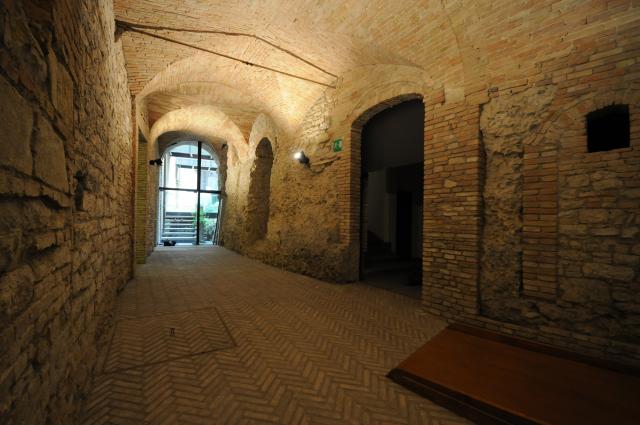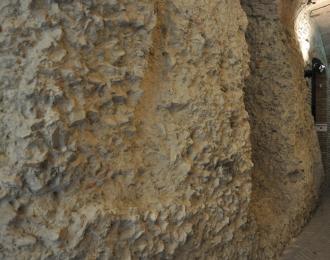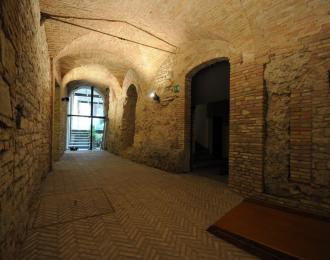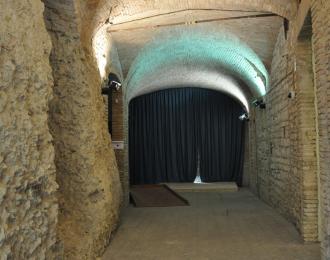Marzio Amphitheatre
Civic Museum at Palazzo della Penna

In the 1980s restructuring and adaptation work on Palazzo della Penna revealed that Roman vestiges had been integrated into the building’s foundations. Academic texts on the history of Perugia frequently mention the existence of an amphitheatre or theatre, known as Marzio, in the area where the Vibi (and later della Penna) palazzo was built. The same sources often refer to the destruction of an amphitheatre during the Visigoths’ assault in the 6th century A.D. (who may have used the site to build one of their fortresses) citing an oral tradition claiming that the events leading to Sant’Ercolano’s martyrdom took place in the same area.
The amphitheatre was built in a suburban zone in the southern sector outside the original Etruscan city walls which are still partially visible inside the Rocca Paolina fortress and at Porta Marzia. Palazzo della Penna itself was partly built along the lines of pre-existing building works. The most notable evidence of this is the use of a section of the ancient wall as part of the Palazzo dell Penna’s internal circular gallery onto which the basement area opens to this day. The preserved section of the wall, measuring 35 metres long to a maximum of 3 metres high, may have been the perimeter wall of one of the amphitheatre’s external galleries, the curvature of which has a radius of 54 metres. Only the cement work of the nucleus remains as the original external finishing has been lost.
Given the original foundations in the uphill sector towards the ancient city wall no longer exist, it has not been possible to determine whether the amphitheatre was a complete building or whether it was partly sustained by an existing rampart. In common with most of the entertainment facilities built outside city walls in that period, generic analysis dates this type of structure to around the 2nd century A.D.


